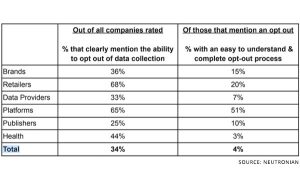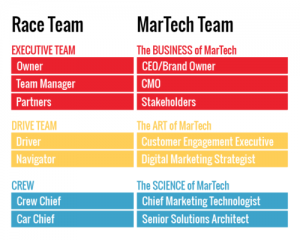Neuroscience is one of my favorite topics, and recently it’s one of the things I spend most of my free time learning about.
More and more, leaders will need to understand the neuroscience and psychology of motivation if they want to have high performing teams. Employee engagement, while mostly common sense, is something that employers still seem to get wrong.
The reason for why they get it wrong is because of how delicate humans are. Everyone is different, and there is no standard way of dealing with everyone. Some people are introverts, some are extroverts, some are ambiverts. There are people that work best in the morning, some work best at night, some like to work from home, some can’t work from home.
These are all small examples of why we need to understand human behavior as much as possible if we want to be great leaders.
It is not the strongest or the most intelligent who will survive but those who can best manage change. –Charles Darwin
The way that technology and forms of communicating (with employees and customers) is changing is almost scary. There is no other time in history where things have changed this quickly.
Ten years ago, the thought of having a Facebook page for your company might have seemed silly, and nowadays, it seems like it’s a requirement. Even if you’re not directly in the IT or marketing field, your business is affected by organizational change.
As a leader, you can choose to stick with the status quo, or change and adapt. But this is much easier said than done, hence the whole point of this blog post about the neuroscience of why employees resist organizational change. Change is incredibly difficult for each one of us, and even more difficult for entire organizations.
Let’s look at some interesting statistics to help me illustrate my point.
- In an IBM Global CEO study, 83% of CEOs said that “Substantial Change” was their biggest challenge.
- According to a study by Towers Watson, 75% of organizational change initiatives fail (more on this later).
- 28% of CEOs that got fired by their board, got fired because they “mismanaged change.”
According to the research, the top three reasons why organizational change initiatives fail are:
- Leadership not capable of leading the change.
- Not enough communication and employees aren’t involved enough.
- The change takes too long.
In that Towers Watson study I mentioned earlier, there were some very interesting numbers that I want to talk about further:
- Employers felt 55% of change management initiatives met initial objectives, but only 25% felt gains were sustained over time.
- 87% of respondents trained their managers to “manage change,” but only (a dismal) 22% felt the training was actually effective.
- 68% of senior managers said they’re “getting the message” about reasons for major organizational changes, but that figure falls to 53% for middle managers and 40% for front-line supervisors.
Changing something across the entire organization is a big deal, and a big commitment. If you’re going to change something, everyone (and I mean everyone) needs to be on board, and committed for the long term. Regularly checking in (ideally quarterly) and seeing how we’re progressing is required. But then the question becomes progressing towards what?
The most important thing to figure out is what are your goals for this change? According to research by Deloitte, organizations that make it easy for employees to set clear goals are four times more likely to score in the top 25 percent of business outcomes.
The key word there is “clear”. Many managers will simply tell their employees to “do a better job”, but that’s so vague. And then they wonder why the employee is upset when they’ve been told that they haven’t done a good enough job.
Similarly, organizations that have employees revise or review their goals quarterly or more frequently were three-and-a-half times more likely to score in the top 25 percent of business outcomes as well. The research also found a major impact on business outcomes when employees feel vested in their goals and senior leaders create an environment of accountability for goal achievement.
There are many different ways to set goals, but one of the best ones that aligns with this research is called Objectives and Key Results.
Setting Objectives And Key Results
Objectives and key results (OKR) is one of the best ways to focus your team around objectives. You set high-level, somewhat vague objectives, and then very specific key results that will get you to that point.
As an example, you could say, in this quarter I want our company to be the industry leader (objective), and here is what will have to be done to get there:
- Speak at 4 conferences.
- Get 20,000 new signups.
- Publish 3 white papers.
Those are your three key results for that objective. Notice how specific and measurable the key results are. I didn’t write “speak at a bunch of conferences” or “get lots of new signups”, these are very easy to measure if we’re hitting our target or not. That’s one of the most important parts of setting OKRs.
The company is supposed to set their own OKRs, and every employee is supposed to set their own personal OKRs. Ideally, the personal OKRs are aligned with the company’s OKRs.
The fact that the personal OKR is aligned with the company OKR is probably my favorite feature of the system. It aligns employees around the purpose of your company. I’ve spoken many times about the importance of purpose as an intrinsic motivator, and having employees work towards the same goals as the company is incredibly satisfying.
Another important part of the OKR system is that everything is made public, meaning anyone can see the company’s OKRs and my personal OKR at any time. This creates a sense of accountability among the team, and everyone helps each other reach their goals. This is important, because one of the numbers I shared earlier from the Towers Watson study was all about how lack of communication (especially to front-line employees) is a big reason for change failing.
Continuous Learning And Training
The Peter Principle is one of the most famous concepts in management for a reason. There is an major lack of focus on personal growth and development at most companies.
If someone is being promoted to a position based on their experience in their current position (and not the skills required for the new position) then they won’t be as effective as if they had trained and learned these skills beforehand.
For organizational change, the training is being done, but according to the data, it’s not very effective. Why is that? It’s a very complex issue. Companies spend insane amounts of time, energy and money into training with very little to show for it.
Companies need to spend more time planning the training then doing the actual training if they want to be successful. Ask yourself questions like:
- How are you going to allow employees to practice?
- How are you going to provide feedback?
- What sort of technology are you going to use?
Also, it’s not as linear as saying if an employee goes to get trained, then he’ll be trained, and everything will be good. This isn’t how life works, it needs to be a continuous thing.
The concept of spaced-repetition learning is one of my favorites. The brain needs time to digest information after it receives it, and usually forgets about it very quickly. If we can take a day or two rest, and then come back and review the thing we learned on the first day, there will be a much higher chance of retaining that information.
In neuroscience, they call this the “default mode network”, which is essentially what is happening in the brain when it is resting. It turns out, that the brain is doing anything but resting, and is actively working to process and make sense of anything new that its learned in the last day.
There are many studies that have been done that prove that memory is dependent on sleep. Giving employees a chance to rest and digest the information as it comes in is important for them to learn it.
Ensuring that employees can quickly access the information they need, even after the training is over, is probably the most important thing to get right.
The Brain Hates Change
The neuroscience of brain changing is so interesting.
The brain is naturally set up to resist change, and keep the same routines, no matter how bad they are. As an example, in many studies of patients who have undergone coronary bypass surgery, only one in nine people, on average, adopts healthier day-to-day habits.
As soon as something new happens, our brains automatically start trying to compare it with previous things we already know and are familiar with. This process of comparing the two actually uses up a lot of energy in the brain.
The part of the brain that deals with familiarity and things you do all the time (habits) requires much less energy, and the brain naturally defaults to that.
Our brains are surprisingly lazy, and when given the option to use the part of the brain that requires more energy, our brains will naturally choose the part that expends less energy.
An example of this is that after a few months of driving a car, we pretty much drive without even thinking. But if we go to a different country, where they drive on the other side of the road, this is incredibly complex for our brains to understand.
Imagine how complex it is then to create organizational change. When management is used to measuring employees a certain way or conducting meetings a certain way, it becomes very difficult to change the way that all of these managers work at once.
Another problem, is that the change activates a fear response in the brain, causing us to not behave rationally. Psychologist Barbara Fredrickson has done some amazing work studying emotions and how they affect us, and one of her theories is called Broaden and Build.
What it essentially means is that positive emotions lead us to broaden our view and build up new skills, whereas negative emotions do the exact opposite. They limit and narrow our thinking and affect our decision making. Any time that there is any change occurring, these negative emotions kick in.
So then the question becomes, how do we change all of this? How do we get employees to accept these changes? The answer, is in building new habits.
Building Better Habits
Building habits is much easier said than done, but if you have a good process for it, it can be done and can change the way you are.
There are many people that believe that it takes 21 days to build a new habit, but there is actually no scientific evidence to back that up.
Building a new habit is a bit more complex than that, and actually depends on a lot of things like how big of a habit it is, how easy it is for you to do, other social and external triggers, etc. For example, it’s much easier to stop watching TV after 9pm than it is to quit smoking.
An easy way to make it last is to start very small. Research shows that you should start so small that it makes it ridiculously easy to do. Stanford professor B.J. Fogg has a famous example about wanting to start flossing his teeth, so he started by just flossing one tooth. While that sounds gross, it helped him build that habit.
For me, cracking the code on flossing was to put the floss right by the toothbrush, and to commit to myself that I would floss one tooth — only one tooth — every time after I brushed. I could floss them all if i wanted to, but the commitment was just one tooth. – B.J. Fogg
I’ve written about this before, but there is a concept in psychology called the Zeigarnik effect. What that means, is that human nature is to finish something once we’ve started it. So an easy way to build a habit that you might think is tough, is to start small, and then naturally we’ll want to finish it.
As a simple example, if you want to start exercising more, commit to walking on the treadmill for five minutes – that’s it. Before you know it, you’ll have finished a 45 minute intense workout.
What this means for organizational change is to start small, document everything, and readjust as you go. Consider this like building a new habit for the entire organization.
Changing HR Practices
Imagine the resistance in change going from something like an annual survey to a weekly or monthly survey. It’s similarly tough to change from an annual performance review to monthly or quarterly reviews.
Everyone is just used to the annual schedule, and maybe HR knows that it’s not ideal, but they’re not willing to change. Making communication (surveys, feedback, reviews) more frequent will help your company to be more agile and to react quicker to changing markets.
This is where the advice on how to build better habits comes in.
One of the hardest parts, especially for bigger companies, is the sheer size of the change being requested. It’s a logistical nightmare to have organizational change for hundreds or thousands of employees. What you could potentially do is start small, with one or two teams, test it, and see if it makes sense to go enterprise-wide.
A great example of a big company that has managed to stay agile is Spotify, the music streaming service. The way they do it is by breaking up the company into smaller “squads” that act as their own independent lean startup. Each squad serves a particular function in the business, and acts independently of the rest of the company.
Jeff Bezos, CEO of Amazon has a famous two-pizza rule: Never have a meeting where two pizzas couldn’t feed the entire group. It’s important to maintain that type of mindset, where smaller, flat teams can work the way that they want to.
Employees want to be heard more, and they want to make a difference at the company they work for. That sense of pride and ownership is one of the best things you can do for long term engagement. Give them that voice, by changing the way HR communicates with employees.
Has Your Company Gone Through A Successful Organizational Change?
(206)







